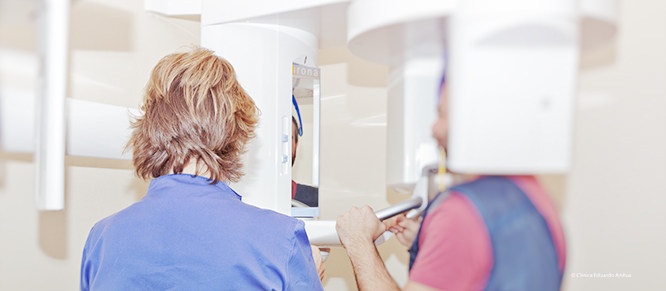The Anitua Clinic has two digital panoramic radiography units in which both the X-ray source and the electronic sensor that acts as film are governed by software that allows X-ray images to be obtained for the different anatomical structures of the stomatognathic system decreasing the patient's exposure to X-rays by up to 90%, thanks to the incorporation of robotics. By using these appliances it is possible to make full or partial panoramic projections and special projections for paranasal sinuses or TMJ.
At the same time, these instruments are equipped with cephalostats, to obtain lateral and frontal cephalic X-ray images which are essential for orthodontic diagnosis by cephalometry, in addition to the carpal X-ray that indicates the state of growth and development in the patient facilitating decision-making when planning treatment.
Using this technique it is possible to convert the X-rays into electronic signals through a sensor similar to conventional film. Once these images have been captured and with the help of a computer it is possible to view them immediately thus avoiding waiting for them to be developed and using the polluting liquids and elements of conventional radiology. More importantly, due to the extreme sensitivity of the electronic sensors, the radiation the patient and operator receive is reduced by 60% in the case of intraoral X-rays and up to 90% for extraoral X-rays.



